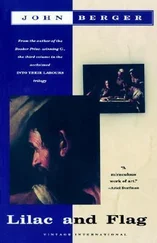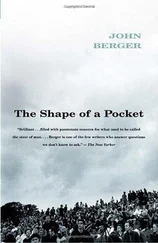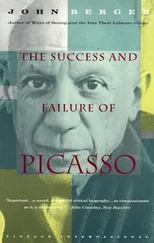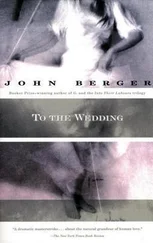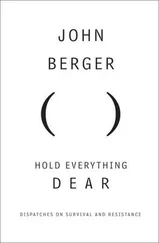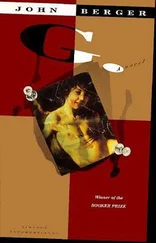The distortions in this work are not emotional in the expressionist sense: they clearly don’t reflect the artist’s attitude to his subject, if his subject is assumed to be a woman. Nor are they structurally analytical: they reveal nothing about the way a body moves, grows or is controlled. They don’t, in other words, take us beyond static appearances, propelled forward by either emotion or dynamic knowledge. On the contrary, Moore’s distorted forms appear more immutable than any living appearance. They are dead? Not quite. More dead than alive? Yes, but what is more dead than alive? Inorganic matter. And there you have it. Moore’s subject here is not a woman: it is the inert material he has in his hands. This work doesn’t challenge the reality of the human figure: it challenges the reality of the meaningless mass that it might so easily have been. It is an object striving to become an image: a prophecy of life not yet manifest. And so it seems to me that Moore’s work represents effectively and truthfully the modern artist’s struggle to achieve vitality, to discover a theme. It poses the problem, it begs for a solution, but it does not offer one. It is art which has voluntarily put its back against the ultimate wall. Which is also why no one can follow Moore. One can’t go further back than he has.
1955
By temperament Gris appears to have been obstinate, cold, mean, but courageous about his health — he died at forty; his great virtues as an artist were his intelligence and clarity, the latter quality being the result, as with Stendhal, of an extreme, disciplined frankness. He was as near to a scientist as any modern painter has been, and thus, because Picasso’s and Braque’s discovery of Cubism was the discovery of a formula, Gris was the purest and most apt of all the Cubists.
It may seem shocking in our period of hysterical individualism to say that Cubism supplied a formula. Yet this was its unique advantage over all other twentieth-century movements, and is why many second-rate artists who came under its influence were temporarily made first-rate. At its best it was not, of course, a formula for making pictures, although it finally became that; it was a formula for interpreting and understanding reality.
Theoretically, the reality of an object for a Cubist consisted of the sum total of all its possible appearances. Yet in practice this total could never be arrived at, because the number of possible visual appearances (or aspects) was infinite. Consequently, the most the Cubist could do was somehow to suggest the range of, the infinity of possibilities open to, his vision. The real subject of a Cubist painting is not a bottle or a violin; the real subject is always the same, and is the functioning of sight itself. The bottle or the violin is only the point of focus, the stake to which the artist’s circling vision is tied. (The Cubists’ trick of imitating the surfaces of the objects they were painting — by wood graining, marble patterning, etc. — served to fix this necessary focus in the quickest possible way.) To look at a Cubist painting is like looking at a star. The star exists objectively, as does the subject of the painting. But its shape is the result of our looking at it.
The artist, in other words, became his own subject, not in any subjective or egocentric manner, but as a result of his considering himself and the functioning of his own senses as an integral part of the Nature he was studying. This was the formula for Cubism and when Cézanne insisted on being faithful to Nature via his petite sensation he predicted it. Again, however, I want to emphasize that by formula I mean a new, revolutionary truth, which, once posed, can be generally learned, taught and applied. Why revolutionary? Because, simultaneously with the scientific discoveries of that period (Rutherford, Planck, Einstein) which were just beginning to give man, for the first time in history, the possibility of an adequate control of his environment, the Cubist formula presupposed, also for the first time in history, man living unalienated from Nature. And it is perhaps this which explains why those few Cubist pictures which were created during the years immediately preceding the First World War are the calmest works painted since the French Revolution.
Following the war and its consequences, the prophetic confidence of the Cubists was broken. They had enlarged the vocabulary of painting, but the revolutionary meaning of what they had added was largely forgotten. Only Léger remained consistently faithful to the original spirit of Cubism: Picasso was so spasmodically: whilst Braque and Gris withdrew into decorative idioms — Gris in an architectural spirit, Braque with the spirit of an epicure poet.
It still seems logical to believe, however, that when eventually a modern tradition of art and teaching is established — and this tradition will inevitably be materialist in philosophy and uncommercial in context — it is to Cubism that its exponents will return as a starting point.
1958
Critics should always look their hobby-horses in the mouth. Yet despite this warning, the more I think about the art of the last and the next forty years (which is the minimum time-span with which any critic should concern himself) the more I am convinced that the question of Cubism is a — and probably the — fundamental one. Cubist mannerisms are of course widespread, but it is not to these that I refer; stylistic mannerisms are the small-talk of art. It is the Cubist attitude to nature, to the content of art, which has opened up so many real and truly modern possibilities.
The static single viewpoint in painting and sculpture can no longer satisfy the expectations deriving from our new knowledge of history, physical structure, psychology. We now think in terms of processes rather than substances. Many twentieth-century artists have expressed this shift and progress in our knowledge by using unusual, eccentric viewpoints whose significance depends on vibrant comparisons, made outside the picture, with other less eccentric viewpoints. This is the principle behind expressionist distortions and surrealist juxtapositions. Their success depends on — as it were — setting the viewer spinning. Their argument is: a form is not in fact what it appears to be, and therefore if we wilfully deform it we can usefully make people doubt the apparent truth; so let us cast off and trust to the unknown currents. The reduction to absurdity of this attitude is the worship of the accident, as in Action Painting.
The Cubist attitude is totally opposed to this. The Cubists established the principle of using multiple viewpoints within the picture and therefore of controlling the spin and the vibrations of meaning. They were concerned with establishing new knowledge rather than with destroying the old, and so they were concerned with statements, not doubts. They wanted their art to be as self-sufficient as the truth. They aimed to disclose processes, not to ride hell bent down them into ferment. They were not of course scientists. They were artists, and so they connected one phenomenon with another by an imaginative rather than physical logic. Human consciousness was their arena as well as their tool. But they were almost unique in modern art in that they believed that this consciousness could be considered rationally, not, as all romantics believe, just suffered.
Readers might now reasonably assume that I am talking about the classic Cubist works of 1908 to 1913, and that when I say ‘multiple viewpoints’ I mean it literally and optically. The true consequences of Cubism, however, are far wider, and nobody illustrates this better than the sculptor Jacques Lipchitz, along with Zadkine among the few possibly great sculptors of our time.
Читать дальше

